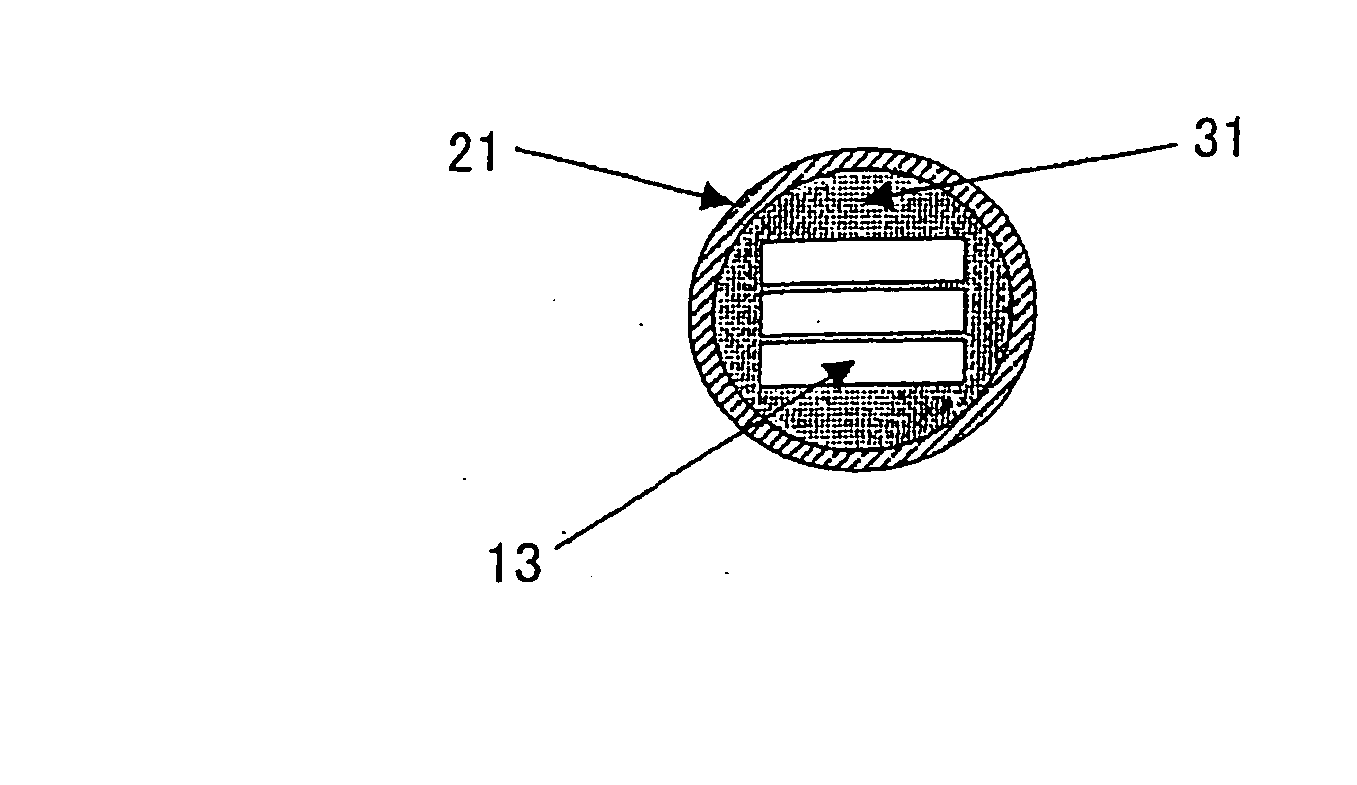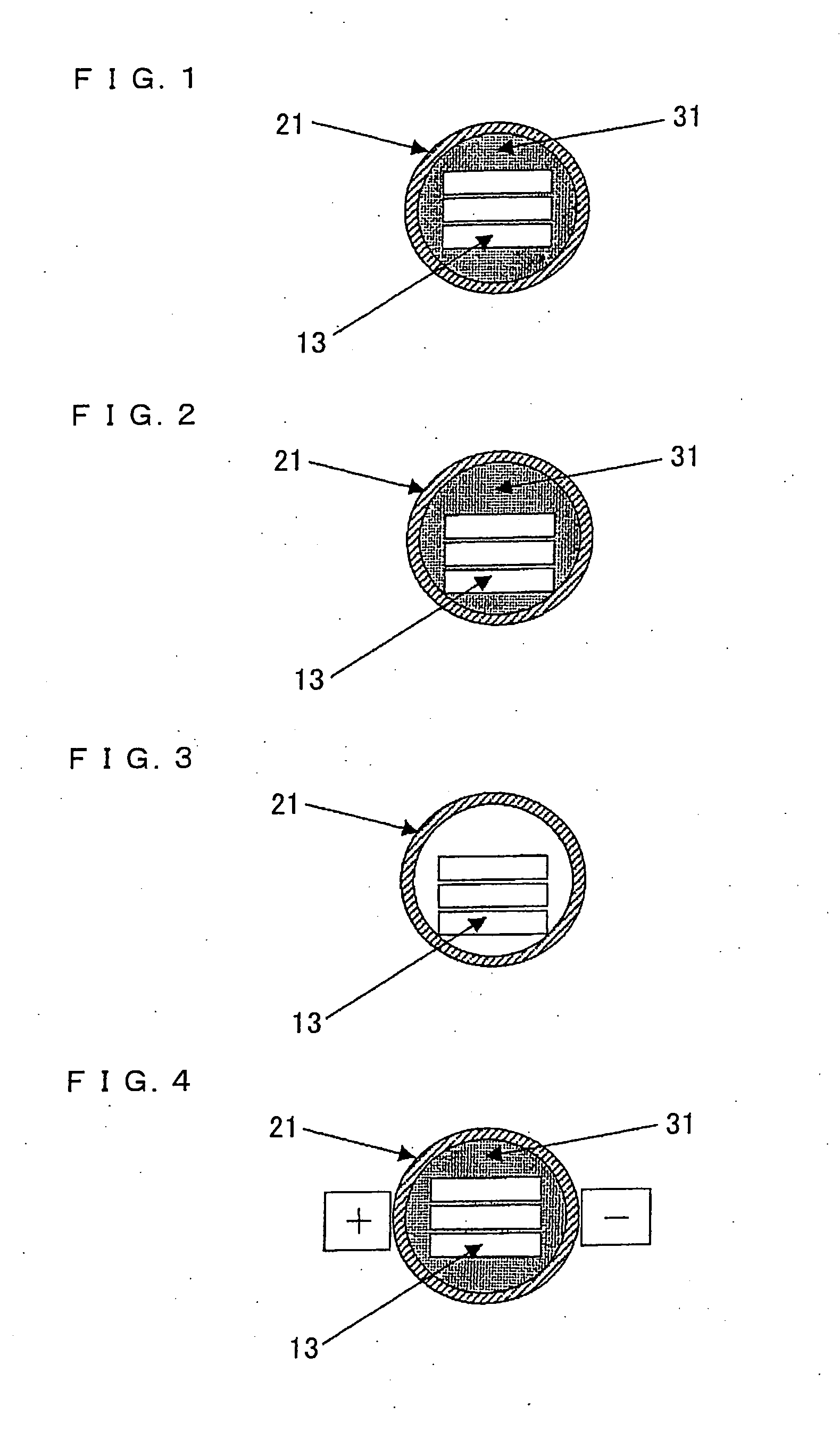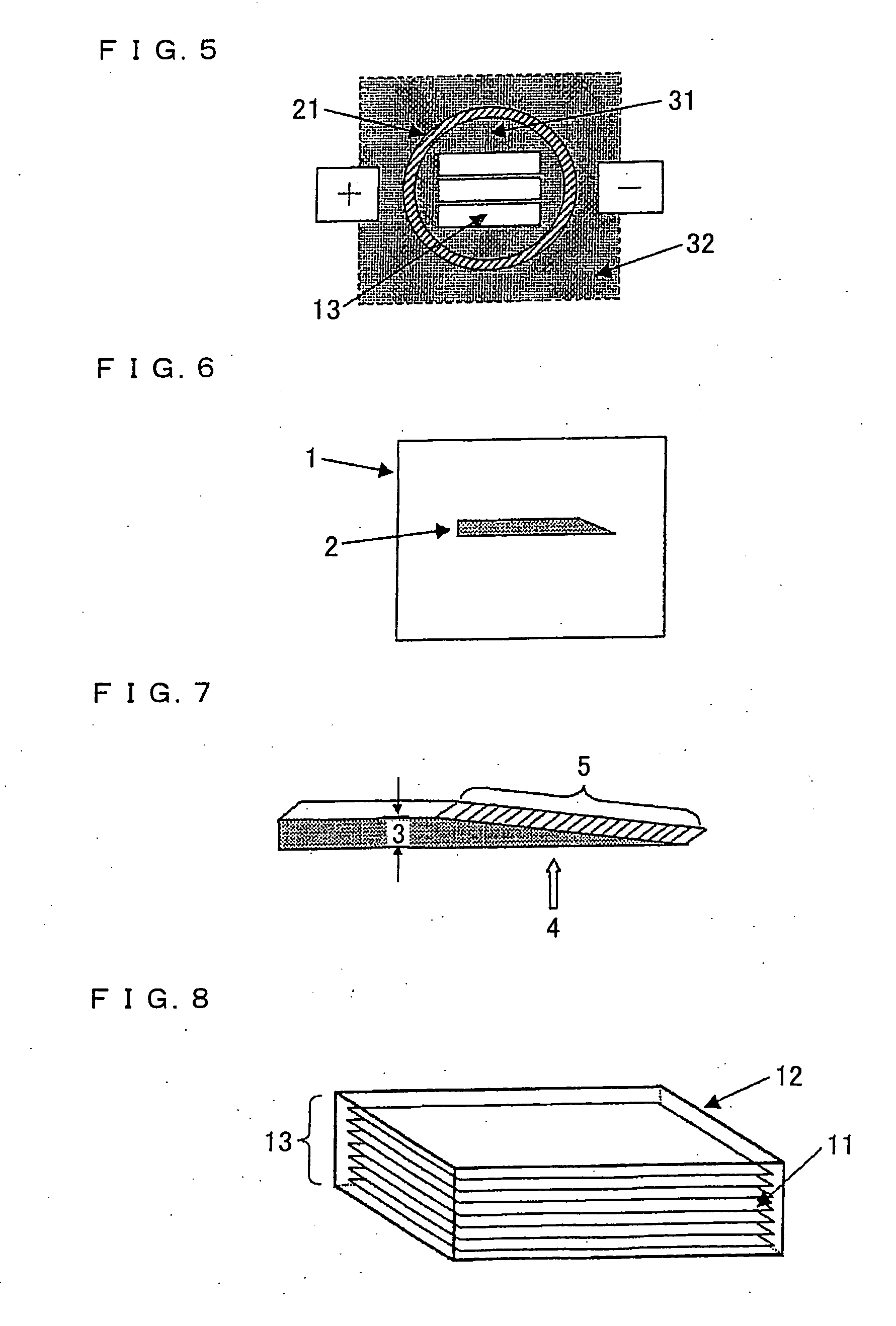Method for Producing Graphite Film, and Graphite Film Produced By the Method
a graphite film and graphite technology, which is applied in the direction of electrolysis components, electrolysis equipment and processes, and semiconductor/solid-state device details, etc., can solve the problems of insufficient graphite as a heat radiation material for use in a recent electronic device emitting a drastically large amount of heat, damage to the film is easily caused, and the effect of high quality
- Summary
- Abstract
- Description
- Claims
- Application Information
AI Technical Summary
Benefits of technology
Problems solved by technology
Method used
Image
Examples
example 1
[0270] Each polyimide film A was sandwiched between graphite plates and heated in an electric furnace under nitrogen atmosphere by increasing a temperature up to 1000° C. The heat treatment was then carried out at a temperature of 1000° C. for 1 hour, and films were carbonized. These carbonized films are referred to as carbonized films A′.
[0271] The obtained carbonized films A′ sandwiched between the flat and smooth graphite plates having a shape of 6 cm×width 6 cm×thickness of 5 mm were held in a graphite vessel having the shape of a rectangular solid. The vessel including the carbonized films A′ was then covered by carbon powder essentially consisting of coke, and heated by directly electrifying the entire vessel and carbon powder to heat the film up to 3000° C., not by heat application under atmosphere. As such, graphite films were manufactured.
example 2
[0272] Polyimide films B were used. As in Example 1, graphite films were manufactured by carbonizing the polyimide films B and then electrifying the carbonized films B′.
example 3
[0273] Polyimide films C were used. As in Example 1, graphite films were manufactured by carbonizing the polyimide films C and then electrifying the carbonized films C′.
PUM
| Property | Measurement | Unit |
|---|---|---|
| angle | aaaaa | aaaaa |
| angle | aaaaa | aaaaa |
| thickness | aaaaa | aaaaa |
Abstract
Description
Claims
Application Information
 Login to View More
Login to View More - Generate Ideas
- Intellectual Property
- Life Sciences
- Materials
- Tech Scout
- Unparalleled Data Quality
- Higher Quality Content
- 60% Fewer Hallucinations
Browse by: Latest US Patents, China's latest patents, Technical Efficacy Thesaurus, Application Domain, Technology Topic, Popular Technical Reports.
© 2025 PatSnap. All rights reserved.Legal|Privacy policy|Modern Slavery Act Transparency Statement|Sitemap|About US| Contact US: help@patsnap.com



